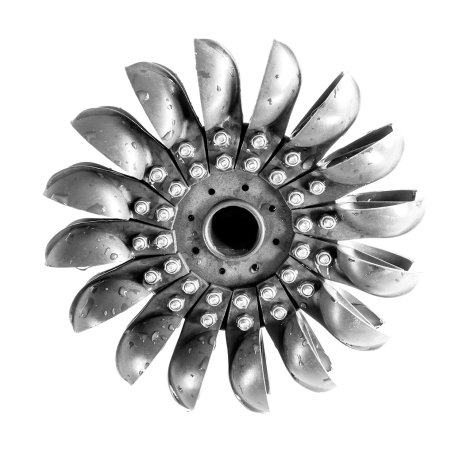
W
Water turbine
A device that converts the kinetic or pressure energy of flowing water into rotational motion that can drive a generator and produce electricity. A water turbine is a rotating device with shaped blades to which water flowing from a reservoir is fed. The energy of the flowing water pushes against the blades and spins the turbine, which can then do useful work. There are a number of types of turbines (Francis, Kaplan, Pelton etc.) differing in the shape of the runner, the blades or the method of feeding water to the runner. The turbine for a hydroelectric power plant is selected according to the characteristics of the water course, mainly flow and hydraulic head.




